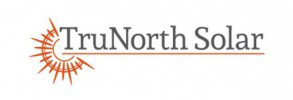Like any electrical system, a solar array needs a way to manage the flow of electrical energy. In order to avoid damaging your household electronics, the electrical grid, and your solar panels themselves, a system of electrical inverters and optimizers need to be in place. Inverters change the DC current produced in solar panels to AC current used in household appliances, and are an essential part of every solar system. There are two main types of inverters: micro-inverters, and string inverters.
String inverters are used to link many solar panels together and turn that combined power to AC. However, like old Christmas lights, when one panel goes out or is shaded for a period of time, the production of the whole array is compromised. Micro-inverters are installed on the back of every solar panel and independently feed AC power to the grid while monitoring the individual production of each panel – but are not without flaws of their own. They tend to be more expensive up front than string inverters, and suffer more malfunctions than string inverters. Micro-inverters are also a newer technology only coming onto the market in the last 5 years, unlike string inverters, which have been used on solar arrays since the 1970s.
Power optimizers maintain the power produced by each individual panel at an optimal level that is then sent through a main string inverter. Optimizers also monitor the production of each panel individually. Optimizers are also a newer technology, which means they haven’t been tested in the field for very long, but they are a promising new technology.
We, at TruNorth Solar, are here to help you decide which kind of inverters and optimizers will work best within your budget, and within the bounds of your system!
